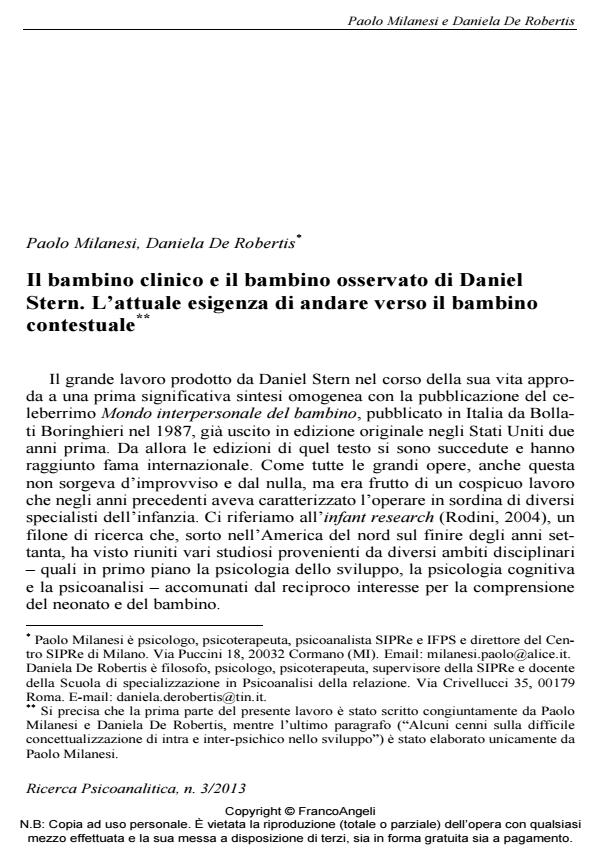Daniel stern: from the observed clinical infant to the contextual infant.
Journal title RICERCA PSICOANALITICA
Author/s Paolo Milanesi, Daniela De Robertis
Publishing Year 2013 Issue 2013/3
Language Italian Pages 36 P. 47-82 File size 713 KB
DOI 10.3280/RPR2013-003005
DOI is like a bar code for intellectual property: to have more infomation
click here
Below, you can see the article first page
If you want to buy this article in PDF format, you can do it, following the instructions to buy download credits

FrancoAngeli is member of Publishers International Linking Association, Inc (PILA), a not-for-profit association which run the CrossRef service enabling links to and from online scholarly content.
This paper highlights some theoretical assumptions contained in psychoanalytical models of development and shows how Stern’s work has challenged these assumptions leading to a deep revision of some psychoanalytical concepts. In the second part of the paper, the author presents an epistemological critique of Stern’s theories. In particular, starting from Philip Cushman’s critical considerations, the author highlights the tendency underlying Stern’s theories of seeing infant development as aimed at the intrinsic and universal creation of an autonomous self. In closing and starting from Michele Minolli’s theory based on the epistemology of complexity, the author suggests some principles for a contextual theory of development.
Keywords: Daniel Stern, sense of self, clinical child, observed child, contextual child, Ego-subject
- Alle cose stesse. Un contributo del pensiero di Martin Heidegger alla meta-teoria dell’Io-soggetto Paolo Milanesi, in Ricerca Psicoanalitica /2022
DOI: 10.4081/rp.2022.540
Paolo Milanesi, Daniela De Robertis, Il bambino clinico e il bambino osservato di Daniel Stern. L’attuale esigenza di andare verso il bambino contestuale in "RICERCA PSICOANALITICA" 3/2013, pp 47-82, DOI: 10.3280/RPR2013-003005